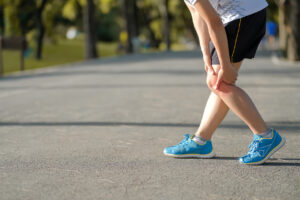
Sports involve incredible forces on the joints and muscles. Athletes can fall or get hit by people or objects. All of these incidents can cause serious injuries, particularly when participants use defective equipment or hazardous facilities.
Orthopedic injuries can produce pain and require expensive reconstructive surgery. However, athletes can suffer more severe injuries than broken bones and torn ligaments. Sports injuries can damage almost any structure in your body. Head, neck, and back trauma can cause brain damage and spinal cord injuries, leaving victims permanently disabled or even dead.
Causes of Sport Injuries

Sports injuries typically happen in only a few ways. Incidentally, these types of trauma can also result from other types of incidents, such as traffic crashes and workplace accidents.
Blunt Force Trauma
Blunt force trauma happens when a sports participant hits a blunt surface without causing an open wound. For example, you could injure yourself when you impact the ground. Even a collision with another person can cause blunt-force injuries.
Blunt force trauma can also happen in cycling and motorsports crashes. For example, a cyclist could suffer blunt force injuries when they get hit by a vehicle in a bicycle accident. Similarly, an off-road motorcycle could collide with another vehicle in a motorcycle accident.
Penetrating Trauma
Penetrating trauma happens when a foreign object pierces your body, causing an open wound. Shooting sports, such as archery, hunting, and target shooting, could cause penetrating trauma.
Penetrating trauma can also happen in other sports when a participant falls on a protruding object. Thus, you could suffer penetrating trauma on a tennis court if you trip in a pothole and fall into the bolts holding down a light pole. Finally, penetrating trauma could happen when defective equipment breaks. Thus, a hockey player could get stabbed by a broken hockey stick.
Hyperextension Trauma
Hyperextension trauma often happens on tennis courts and soccer fields. This type of injury happens when your body stretches, twists, or bends too far or in the wrong direction. An example of this type of injury happens when a player tears knee ligaments during a slip and fall accident on the field or court.
You can also hyperextend your body when you suddenly change directions or speed. For example, if your momentum is down-field and you get hit from the side, the sudden change in direction can hyperextend your neck.
Repetitive Use Trauma
Another common type of sports injury results from repetitive use or injury. Repetitive use trauma happens when damage accumulates because you repeat the action without giving your body time to rest. A common e-sport injury involves ligament damage to the thumb from operating a mouse, keyboard, or game controller.
Broken Bones
An impact on your body can break the bones. For example, you could break a tooth when a baseball hits your face. Twisting or bending forces can also snap a bone. Thus, suppose your foot gets stuck in a rut on a soccer field as you try to turn. The twisting of your leg can break the bone.
Broken bones typically require six to eight weeks to heal. Certain fractures, such as comminuted fractures, can take a year or longer to heal. These injuries occur when the bone breaks into three or more pieces.
Strained Muscles and Tendons
Muscle and tendon strains result from hyperextension trauma.
Stretched and torn muscles and tendons cause symptoms such as:
- Muscle pain and swelling
- Spasms
- Weakness
- Stiffness
These injuries usually heal in four to six weeks. During that time, your doctor will prescribe rest and anti-inflammatory medication. After your body heals, you may need physical therapy to rebuild the injured muscles and the nearby muscles to support them.
Sprained Ligaments
Sprained joints happen when you hyperextend the ligaments holding the joints together. When these injuries happen, you may experience a popping sound or sensation.
Your damaged ligament will cause symptoms such as:
- Joint instability
- Pain
- Inflammation
- Limited range of motion
Mild sprains can heal in four to six weeks with home care such as rest and ice packs. Severe strains may require reconstructive surgery.
Torn Cartilage
Cartilage lines your joints to provide a smooth surface for the bones to move without grinding. Trauma can wear down or tear the cartilage.
Damaged cartilage causes symptoms such as:
- Joint pain
- Inflammation
- Hitching or sticking of the joint
- Clicking sound when you move the joint
Cartilage injuries heal very slowly. In many cases, your cartilage injury will need several months to heal. In some cases, your doctor will operate on your joint to clear out any loose cartilage.
Concussions
Concussions happen when your brain shakes inside your skull. The pressure of the cerebrospinal fluid and meninges on your brain can damage the cells and cause the tissue to swell.
As brain cells swell, you may experience symptoms such as:
- Confusion
- Clumsiness
- Amnesia
- Blurry vision
- Headache
- Drowsiness
Concussion symptoms may only appear after a delay. They may also disappear and reappear as your brain changes due to the injury. Concussion symptoms usually clear up within two months. Repeated concussions can cause Chronic Traumatic Encephalopathy (CTE), an incurable degenerative brain disorder.
Legal Theories for Proving Liability for Sport Injuries
Someone else may bear liability for the losses caused by your sport injury. In many cases, you assume the risk of ordinary and foreseeable injuries when you participate in a sport. But you may have an injury claim in a few situations, including:
Negligence
Negligence happens when someone who owes you a duty of care does something that exposes you to an unreasonable risk of injury or death. For example, a kids’ football league that mixes older kids and younger kids on the teams might have acted negligently since a reasonable person would foresee that the older kids could injure the smaller kids.
Premises Liability
Sports facilities have a legal duty to keep their facilities reasonably free of hazardous conditions. A loose basket support on a basketball court might fall on players, causing injury or death.
Product Liability
Sports equipment manufacturers may be strictly liable for any injuries caused by defective products. Thus, a manufacturer might bear liability for a helmet with a strap that loosens on its own.
A Dallas Personal Injury Lawyer Can Help You Seek Compensation for a Sport Injury
You can seek compensation for your economic and non-economic losses if you prove liability. These losses can include your medical bills, lost income, and pain and suffering. Contact Jay Murray Car Accident and Truck Accident Lawyers, for a free consultation to learn about the compensation you can recover for your sports injury.
Schedule a free consultation at (214) 855-1420 to lear how we can help you.
